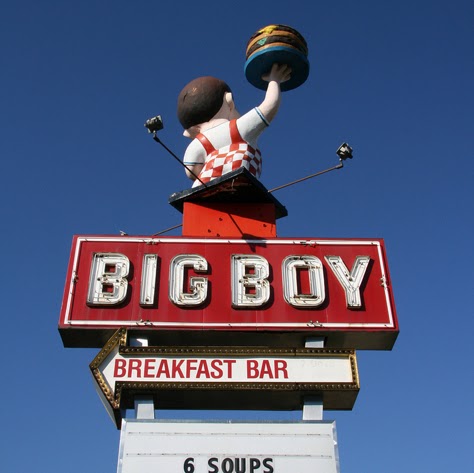Joseph M Wisniewski
age ~57
from Muskegon, MI
- Also known as:
-
- Joseph Michael Wisniewski
- Joseph Etal Wisniewski
- Joe M Wisniewski
Joseph Wisniewski Phones & Addresses
- Muskegon, MI
- Fruitport, MI
- N Muskegon, MI
Medicine Doctors

Joseph M. Wisniewski
view sourceSpecialties:
Allergy & Immunology
Work:
Allergy Partners PAAllergy Partners Of East Tennessee
649 Middle Crk Rd, Sevierville, TN 37862
(865)4291010 (phone), (865)4291005 (fax)
Allergy Asthma & Sinus CenterAllergy Partners Of Eastern Tennessee
124 Lynnwood Dr, Knoxville, TN 37918
(865)6922027 (phone), (865)6922029 (fax)
649 Middle Crk Rd, Sevierville, TN 37862
(865)4291010 (phone), (865)4291005 (fax)
Allergy Asthma & Sinus CenterAllergy Partners Of Eastern Tennessee
124 Lynnwood Dr, Knoxville, TN 37918
(865)6922027 (phone), (865)6922029 (fax)
Education:
Medical School
University of Tennessee College of Medicine at Memphis
Graduated: 1994
University of Tennessee College of Medicine at Memphis
Graduated: 1994
Procedures:
Allergen Immunotherapy
Allergy Testing
Pulmonary Function Tests
Allergy Testing
Pulmonary Function Tests
Conditions:
Acute Sinusitis
Acute Upper Respiratory Tract Infections
Allergic Rhinitis
Bronchial Asthma
Chronic Sinusitis
Acute Upper Respiratory Tract Infections
Allergic Rhinitis
Bronchial Asthma
Chronic Sinusitis
Languages:
English
Description:
Dr. Wisniewski graduated from the University of Tennessee College of Medicine at Memphis in 1994. He works in Sevierville, TN and 1 other location and specializes in Allergy & Immunology. Dr. Wisniewski is affiliated with East Tennessee Childrens Hospital.
Resumes

Joseph Wisniewski
view source
Joseph Wisniewski
view source
Joseph Wisniewski
view source
Joseph A Cw Usarmy Wisniewski
view source
Joseph Wisniewski
view source
Joseph Wisniewski
view sourceLocation:
United States
License Records
Joseph M Wisniewski
License #:
RS091343A - Expired
Category:
Real Estate Commission
Type:
Real Estate Salesperson-Standard
Lawyers & Attorneys

Joseph Wisniewski - Lawyer
view sourceOffice:
Joseph M. Wisniewski, Jr., P.A.
Specialties:
Bankruptcy
Federal Taxation
Business Formation and Planning
Civil Litigation
Personal Injury
Federal Taxation
Business Formation and Planning
Civil Litigation
Personal Injury
ISLN:
902675665
Admitted:
1975
University:
Boston University, 1979; Bowdoin College, B.A., 1970
Law School:
Suffolk University, J.D., 1975
Us Patents
-
Blind Connecting Structure For Inner And Outer Shells Of Chair Back
view source -
US Patent:43902103, Jun 28, 1983
-
Filed:Dec 15, 1980
-
Appl. No.:6/216734
-
Inventors:Joseph M. Wisniewski - Marne MI
Walter C. Mrotz - Comstock Park MI -
Assignee:Haworth Mfg., Inc. - Holland MI
-
International Classification:A47C 740
-
US Classification:297452
-
Abstract:A back structure for a chair including a cushion overlying an interior panel. The cushion has edge portions which wrap around the interior panel. A back panel is spaced from the interior panel, and the opposed edge portions of the panels clamp the edge portions of the cushion therebetween. A plurality of hidden connecting structures fixedly join the panels together. The connecting structure comprises a hub fixed to and projecting outwardly from one of the panels, and a shaft-like projection fixed to the other panel and projecting therefrom into the hub. A one-piece resilient fastener ring is positioned within the hub and has a first set of spring teeth which grippingly engage the hub and a second set of spring teeth which grippingly engage the projection for preventing the latter from being axially withdrawn from the hub.
-
Height-Adjusting Mechanism For Chair Seat
view source -
US Patent:43940013, Jul 19, 1983
-
Filed:Mar 18, 1981
-
Appl. No.:6/244841
-
Inventors:Joseph M. Wisniewski - Marne MI
-
Assignee:Haworth, Inc. - Holland MI
-
International Classification:F16M 1300
-
US Classification:248542
-
Abstract:A threaded spindle as fixed to the chair seat is engaged with a nut positioned within the upper end of the base pedestal. A spring urges the nut for engagement with a clutch plate fixed to the pedestal. This clutch plate holds the nut nonrotatable so that when the chair seat is unoccupied and is rotated, the spindle threads through the nut so as to adjust the height of the chair seat. The nut and clutch plate have opposed engageable cam portions which effect automatic disengagement therebetween if the engaged nut and clutch plate are subjected to excessive torsional resistance. When the chair seat is occupied, the nut moves downwardly away from the clutch plate into engagement with a clutch washer which is seated on the pedestal but is nonrotatably keyed to the spindle, whereby the chair seat and the accompanying spindle and nut can freely rotate without causing a height adjustment to occur. A tube is positioned in surrounding relationship to the spindle and its lower end bears on the nut. When the chair seat is adjusted into its lowermost height position, an abutment on the chair seat engages the upper end of the tube.
-
Height Adjusting Mechanism For Chair Back
view source -
US Patent:43847420, May 24, 1983
-
Filed:Mar 11, 1981
-
Appl. No.:6/242804
-
Inventors:Joseph M. Wisniewski - Marne MI
-
Assignee:Haworth, Inc. - Holland MI
-
International Classification:A47C 100
-
US Classification:297353
-
Abstract:An adjustable mechanism for use with an office chair, such as a secretarial chair, to allow vertical adjustment of the seat back. The mechanism includes a slide which is mounted on the chair back and is vertically slidably supported on an upright which projects from the seat portion of the chair. The slide has a latching lever pivotally mounted thereon and spring-urged into engagement with one of a series of notches formed along one side of an elongated slot formed in the upright. The notches, together with the latching projection formed on the lever, are defined by upper and lower edge surfaces which are individually generated about a centerpoint which is coincident with the pivot axis of the lever to maintain the chair back securely latched when either upward or downward external forces are imposed thereon.
-
Furniture Glide And Furniture
view source -
US Patent:43274617, May 4, 1982
-
Filed:Jun 11, 1979
-
Appl. No.:6/047096
-
Inventors:Joseph M. Wisniewski - Marne MI
-
Assignee:Steelcase Inc. - Grand Rapids MI
-
International Classification:A47B 9106
-
US Classification:16 42R
-
Abstract:The specification discloses a glide within a glide, and most preferably three glides in one which enables the manufacturer to supply two or three different types of glides with one basic glide unit having common parts. The first glide member is made of hard plastic and has a rounded, bottom shoulder surrounding a downwardly opening cavity therein. A second glide member comprises a soft, plastic member seated within said cavity and projecting a short distance below said rounded shoulder, at least when the glide is unweighted. A third glide member comprises a metal cap which seats over the second glide member and against first glide member to provide a metal bottom surface type of glide.
-
Bellows Mounting Arrangement For Swivel Chair
view source -
US Patent:44403720, Apr 3, 1984
-
Filed:Mar 18, 1981
-
Appl. No.:6/244840
-
Inventors:Joseph M. Wisniewski - Marne MI
-
Assignee:Haworth, Inc. - Holland MI
-
International Classification:F16M 1100
-
US Classification:248406
-
Abstract:An extendible and contractible boot is disposed in surrounding relationship to the spindle assembly of a chair. The lower end of the boot is anchored to the pedestal associated with the chair base. The upper end of the boot is supported on the seat assembly by a retainer arrangement which prevents vertical separation between the boot and seat assembly but permits relative rotation therebetween. This retainer arrangement employs a bearing ring, preferably of a split construction, which is snugly and resiliently seated within the upper end of the boot. A retainer plate is secured relative to the spindle and is rotatably supported on the bearing ring.
-
Mounting Arrangement For Cantilevered Chair Arm
view source -
US Patent:44719957, Sep 18, 1984
-
Filed:Jun 22, 1981
-
Appl. No.:6/276149
-
Inventors:Joseph M. Wisniewski - Marne MI
-
Assignee:Haworth, Inc. - Holland MI
-
International Classification:A47C 754
-
US Classification:297411
-
Abstract:A chair wherein each cantilevered side arm terminates in a base portion positioned adjacent the rear edge of the seat. This base portion has an armlike mounting portion projecting forwardly therefrom into the interior of the seat. A U-shaped tubular frame is positioned within the interior of the seat so that the legs of the U-shaped frame project forwardly of the seat, and the bight of the U-shaped frame is positioned adjacent the rearward edge of the seat. The U-shaped frame is fixedly secured to a conventional chair-control frame as disposed interiorly of the seat. The rear portion of the U-shaped frame, including the bight and the elbows which join the bight to the legs, is inclined upwardly and rearwardly relative to the legs. The armlike mounting portions, as they project forwardly into the chair seat, are inclined downwardly at a similar angle. An upwardly opening, channel-like bracket is fixedly secured to each of the elbows.
Youtube
Googleplus

Joseph Wisniewski

Joseph Wisniewski

Joseph Wisniewski

Joseph Wisniewski

Joseph Wisniewski

Joseph Wisniewski

Joseph Wisniewski
Myspace
Plaxo

Joseph Wisniewski
view sourceFine Creations Unlimited

Wisniewski, Joseph
view sourceTech DataTech Data

Joseph Wisniewski III
view source
Joseph Wisniewski
view source
Joseph Wisniewski
view source
Joseph Wisniewski
view source
Joseph Wisniewski
view source
Joe Wisniewski
view source
Martin Joseph Wisniewski
view source
Joseph Wisniewski Jr
view sourceGet Report for Joseph M Wisniewski from Muskegon, MI, age ~57












